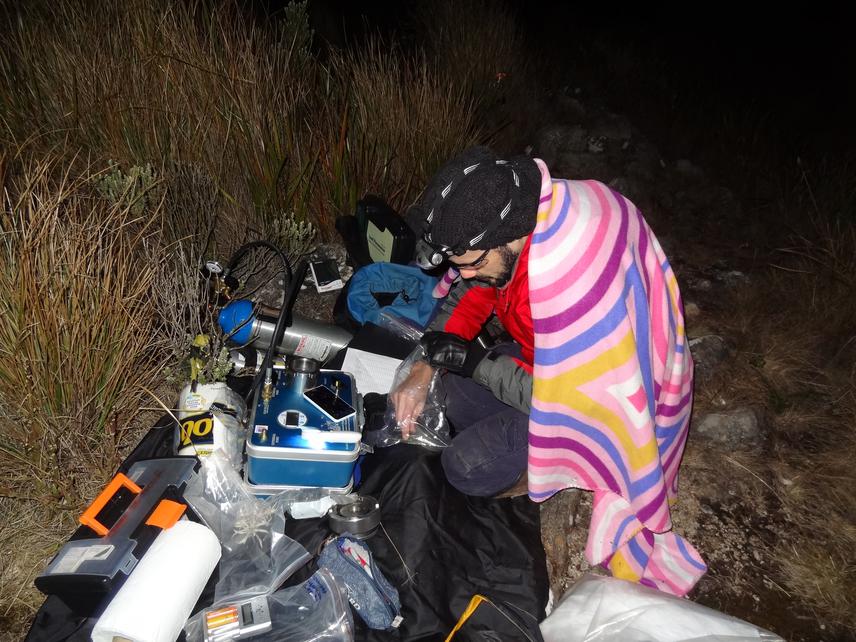Ilaíne Silveira Matos
To assess the role of facilitation, alternative sources of water and functional diversity on the response of High Altitude Grassland vegetation to extreme drought events

The Professor Bruno H. P. Rosado performing measurements of pre-dawn leaf water potential in grasslands species of the Itatiaia National park (Rio de Janeiro, Brazil).
Reductions in both atmospheric and soil water availability, caused by climate change, are expected to profoundly affect structure and functioning of plant communities. Nonetheless, this is not a general trend, since some vegetation have remained virtually unchanged, despite the more frequent and intense drought events. Understanding which are the processes, from individual to community level, that contribute to these differential vulnerability is crucial to predict when and where plants will exceed their thresholds of resistance/resilience to drought. Several functional traits have been proposed as proxy to model vegetation responses, but the actual performance of species in communities often differ from that expected by the models.
One possible reason of these discrepancies is that the ability of plants to rely on alternative sources of water (such as fog) to withstand drought has been neglected in many of these predictions. Moreover, plant-plant interactions can modulate whether a plant actually experiences water stress, both increasing (competition) and decreasing (facilitation) it, but these non-additive effects are rarely incorporated into the models. Through rainout field experiments, we intend to evaluate the role of alternative sources of water, plant-plant interactions and functional diversity in the resistance/ resilience of plant communities to extreme drought events, using the High Altitude Grassland vegetation as a model system.
Since this vegetation is often subjected to fog events we expected that plants will be able to intercept (fog interception), absorb (foliar water uptake) and redistribute (hydraulic redistribution) this alternative source of water, using it to alleviate both short- and long-term water stress. As the intensity and importance of facilitation tend to increase under unfavorable conditions, we also expect that during drought events positive plant-plant interactions will cause a buffering effect at community level, allowing the persistence (higher resistance) and/or favouring the return (higher resilience) of the less-tolerant species. At local level, the results of our work will contribute to the conservation of High Altitude Grasslands communities against the drier conditions expected for the future, allowing us to identify the most vulnerable species, to predict the compositional changes, and to propose more effective actions to minimize the negative effects caused by extreme drought events on plant community structure and functioning. At global level, a better understanding of the role of fog, plant-plant interactions, and functional diversity can be used to improve the accuracy of dynamic global vegetation models.